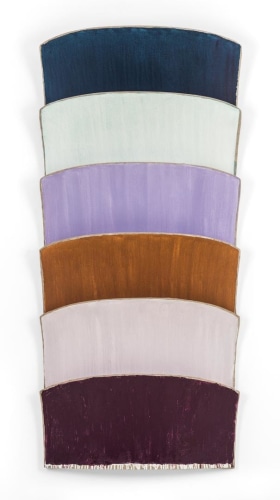
Last night saw the opening of American artist Ron Gorchov’s inaugural London solo-show at Sotheby’s S|2. Curated by Vito Schnabel (son of artist and filmmaker Julian Schnabel) the Marylebone gallery is showing works spanning the full scope of Gorchov’s career, from the 1970s to today. Gorchov has been a key figure in the New York art scene since the 1960s, as part of a group of Manhattan based abstract artists who rejected the traditional rectangular canvas in favour of new shapes and configurations.We asked Schnabel to tell us a little more.
Why is now a good time to show Gorchov’s work in the UK?
This show in London is long overdue. So many artists I love are working with the shaped canvas, from Joe Bradley, to Jeff Elrod, to Rashid Johnson. I thought it was a good time for people to know about Ron, who was one of the pioneers of the shaped canvas alongside Ellsworth Kelly, Blinky Palermo, and Frank Stella.
Which young artists do you see as having been influenced (predominantly) by Gorchov's work?
There is a whole group of artists in Brooklyn who have been inspired by Ron for quite some time: Rashid Johnson, Terence Koh, Grear Patterson, and The Bruce High Quality Foundation. And then there are also artists like Donald Baechler, Elizabeth Murray, and Ugo Rondinone, who understand how important Ron’s work has been since the 1960s. MoMA PS1, an institution focused on showing work by emerging artists, featured Ron’s work in PS1’s inaugural exhibition in 1976, Rooms. Forty years later, he had a solo show there. He continues to be an emerging artist. His work is timeless.
The accompanying text from Ugo Rondinone describes Gorchov as: "A revolutionary figure in Post-War American art, [who] helped defy the New York School in the mid-1960s by pushing painting to its extreme." Do you think there is anyone pushing painting to that extreme today?
Jeff Elrod, Mark Grotjahn, Urs Fischer, Julian Schnabel. Sigmar Polke while he was still alive.
Do true collectors still exist? Or is it all speculators?
True collectors will always exist.
Your favourite painting (of all time)?
Hieronymus Bosch’s The Garden of Earthly Delights
